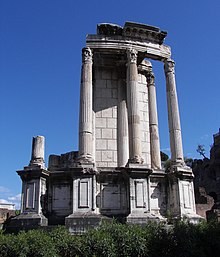This article needs additional citations for verification .(April 2019) |
| Millennium: | 1st millennium |
|---|---|
| Centuries: | |
| Decades: | |
| Years: | |
| 391 by topic |
|---|
| Leaders |
| Categories |
| Gregorian calendar | 391 CCCXCI |
| Ab urbe condita | 1144 |
| Assyrian calendar | 5141 |
| Balinese saka calendar | 312–313 |
| Bengali calendar | −203 – −202 |
| Berber calendar | 1341 |
| Buddhist calendar | 935 |
| Burmese calendar | −247 |
| Byzantine calendar | 5899–5900 |
| Chinese calendar | 庚寅年 (Metal Tiger) 3088 or 2881 — to — 辛卯年 (Metal Rabbit) 3089 or 2882 |
| Coptic calendar | 107–108 |
| Discordian calendar | 1557 |
| Ethiopian calendar | 383–384 |
| Hebrew calendar | 4151–4152 |
| Hindu calendars | |
| - Vikram Samvat | 447–448 |
| - Shaka Samvat | 312–313 |
| - Kali Yuga | 3491–3492 |
| Holocene calendar | 10391 |
| Iranian calendar | 231 BP – 230 BP |
| Islamic calendar | 238 BH – 237 BH |
| Javanese calendar | 274–275 |
| Julian calendar | 391 CCCXCI |
| Korean calendar | 2724 |
| Minguo calendar | 1521 before ROC 民前1521年 |
| Nanakshahi calendar | −1077 |
| Seleucid era | 702/703 AG |
| Thai solar calendar | 933–934 |
| Tibetan calendar | 阳金虎年 (male Iron-Tiger) 517 or 136 or −636 — to — 阴金兔年 (female Iron-Rabbit) 518 or 137 or −635 |

Year 391 ( CCCXCI ) was a common year starting on Wednesday of the Julian calendar. At the time, it was known as the Year of the Consulship of Tatianus and Symmachus (or, less frequently, year 1144 Ab urbe condita ). The denomination 391 for this year has been used since the early medieval period, when the Anno Domini calendar era became the prevalent method in Europe for naming years.